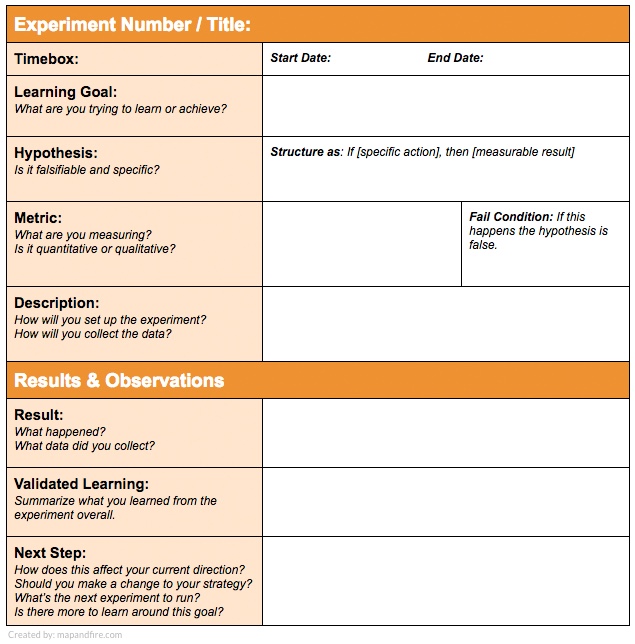
One of the most common mistakes people make with their brand is thinking they can keep track of all the details of their business in their head.
At Map & Fire, we posted a survey on our website to learn how people think about and improve their brand. Two of the questions are:
- Is the overall brand strategy of your business documented in a shareable format?
- Do you have a clear way to improve your brand over time?
The results show that 60% of founders and marketers need help with documenting, and 80% need help with ways to improve their business over time.
The thing is, those two items are closely related. Without documenting your brand’s direction clearly, it’s nearly impossible to make real improvements over time. How will you know what to change? How will you know what’s been working and what hasn’t?
Unfortunately, your head is a terrible place to keep this information.
There’s plenty of research to show how flawed and irrational our thinking can be. We’re affected by countless biases that trip us up, skew our perception, and lead us in the wrong direction.
So, if you rely on your memory to make sense of your entire brand and track progress, you’re bound to repeat mistakes and maybe even go in circles.
To fix this, you need to get those ideas out of your head and into some kind of document that you can share and actively improve. This could take several forms, such as a business model canvas, pitch deck, business plan, or something even simpler. But whatever it is, it has to be written down somehow.
Once your thoughts on your direction are structured in writing, you can move to something even more important: make meaningful improvements to them.
And one of the best way to make these improvements is to run experiments on your brand.
Treating your brand like a laboratory
If you’re not familiar with the whole build-measure-learn cycle from The Lean Startup, the idea of running “experiments” on your brand may sound a little strange. But running these types of experiments is actually pretty easy — and it can even be kind of fun.
The process is just like the experiments you used to do in science class (minus those sweet Bunsen burners). It goes like this:
- First, you state a hypothesis around a key assumption of your brand.
- Then you test it out and collect data to determine if your hypothesis was correct or not.
- Based on what you learn, you either continue the experiment, change something about it and start again, or move on to something else.
And what’s really cool about experiments:
Whether you’re right or wrong, you’ll learn something important from the results.
And the documentation you create builds a knowledge base to help inform the right path to follow (and which paths to avoid).
And now, the experiment template:
NOTE: We have this same template as a free google doc template here.

The value of running brand experiments
Here’s a quick recap of the benefits of running experiments on your brand:
- Focus and alignment: Shared documents of your experiments gets everyone focused on the same goals using the same language. When things need to change, you’ll be able to discuss new solutions straight away instead of first rehashing how you got here.
- A record of decisions: Planting stakes around your decisions is critical for learning. When you create a record of what works and what doesn’t, you gain confidence by building up a proven knowledge base. Iterating on those validated learnings is a key part of real improvement over time.
- Free space, reduce stress: Whether you realize it or not, storing all that business information in your head is stressful. When you get your thoughts written down and organized it frees up mental bandwidth for new challenges and opportunities.
- Recruiting help: When your thinking is documented and shareable it can be used to inspire others to join your team. When you share your thoughts this way it shows you’re committed and thoughtful about your growth.
- Discover new paths: When ideas are only in your head, it’s easy to gloss over details. When you write things down in a structured way you have to articulate the finer points and question assumptions. This process can help trigger new perspectives on old problems.
Some Free Help to Get Started
If you’re in those 60% and 80% groups that need help with defining and improving your brand, you’re obviously not alone. Now’s the time to jump over to the other side and get a clear advantage on the competition.
If you want some more help documenting your brand’s direction, you can click below to download our free brand strategy workbook. It has a series of easy exercises to define your Purpose, Vision, Values, and Big Goals. Spend a little time structuring your ideas and you’ll create a clear path for yourself and everyone else on your team.


